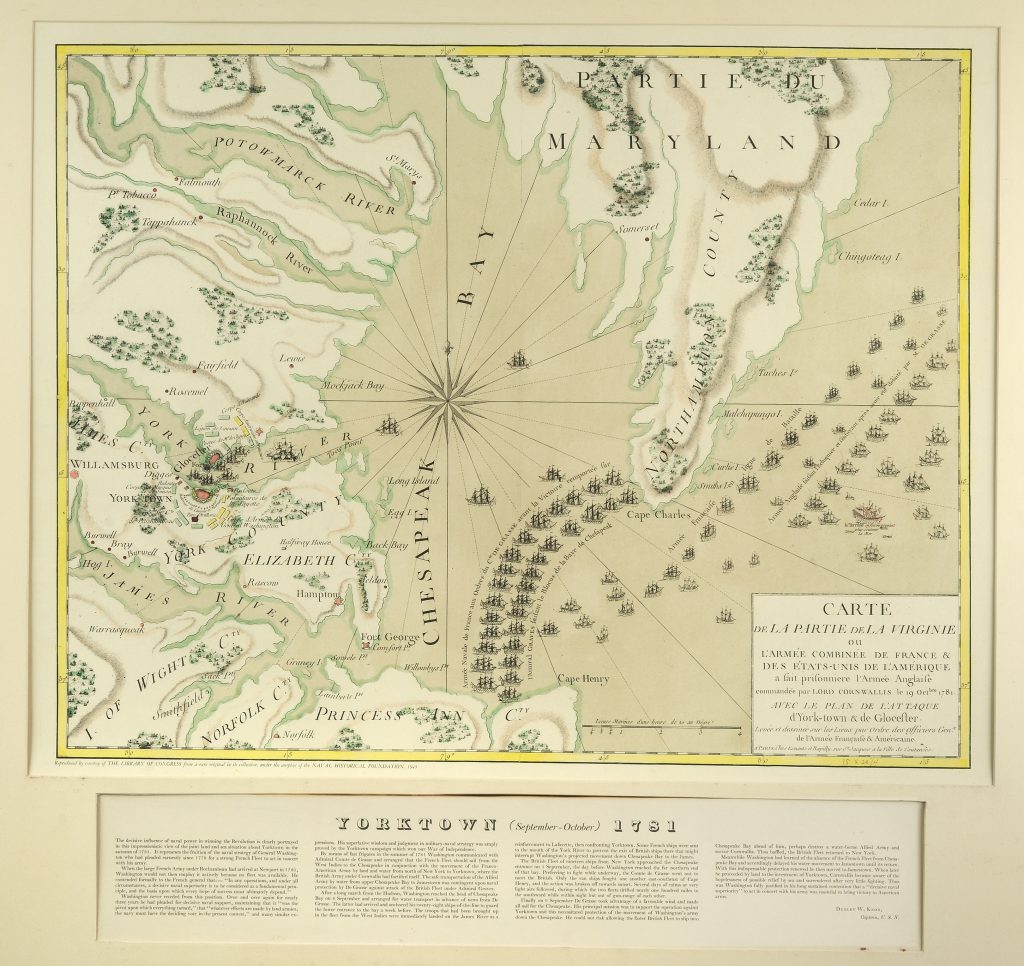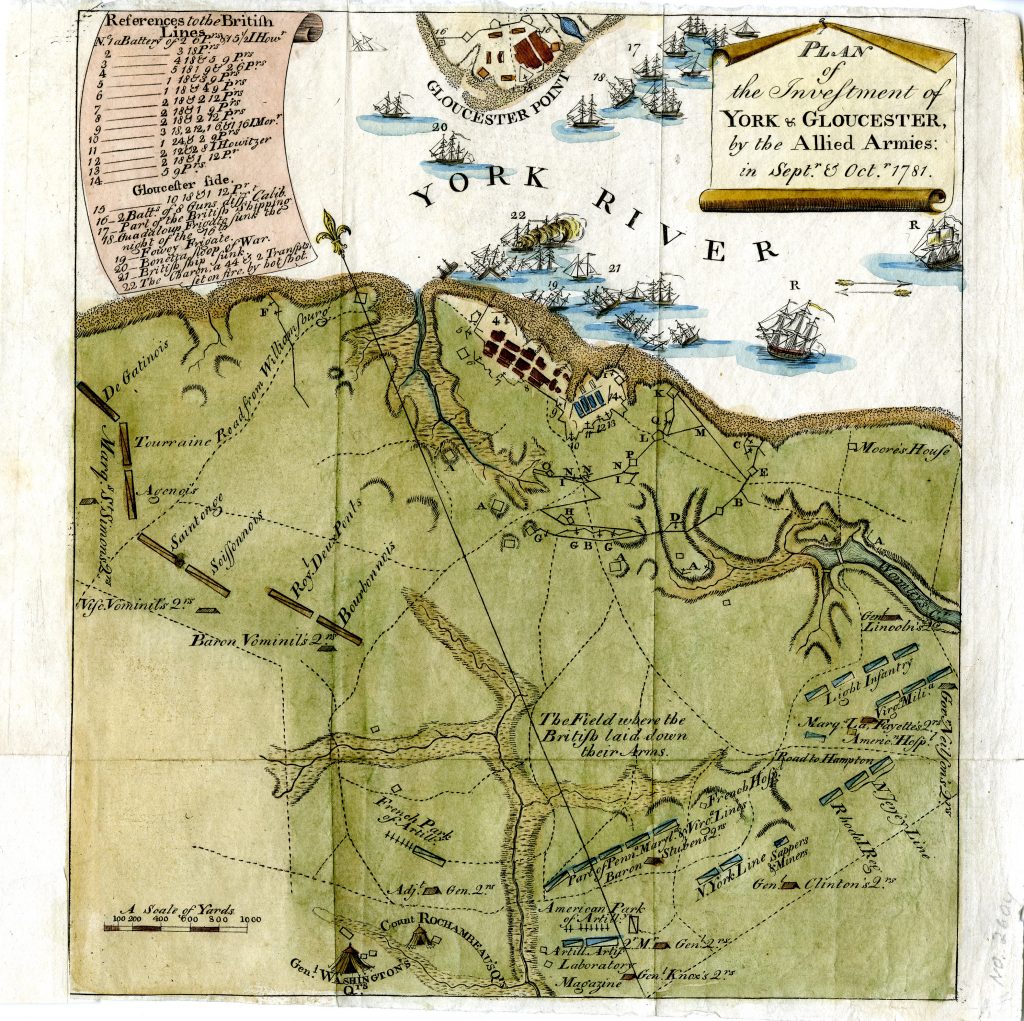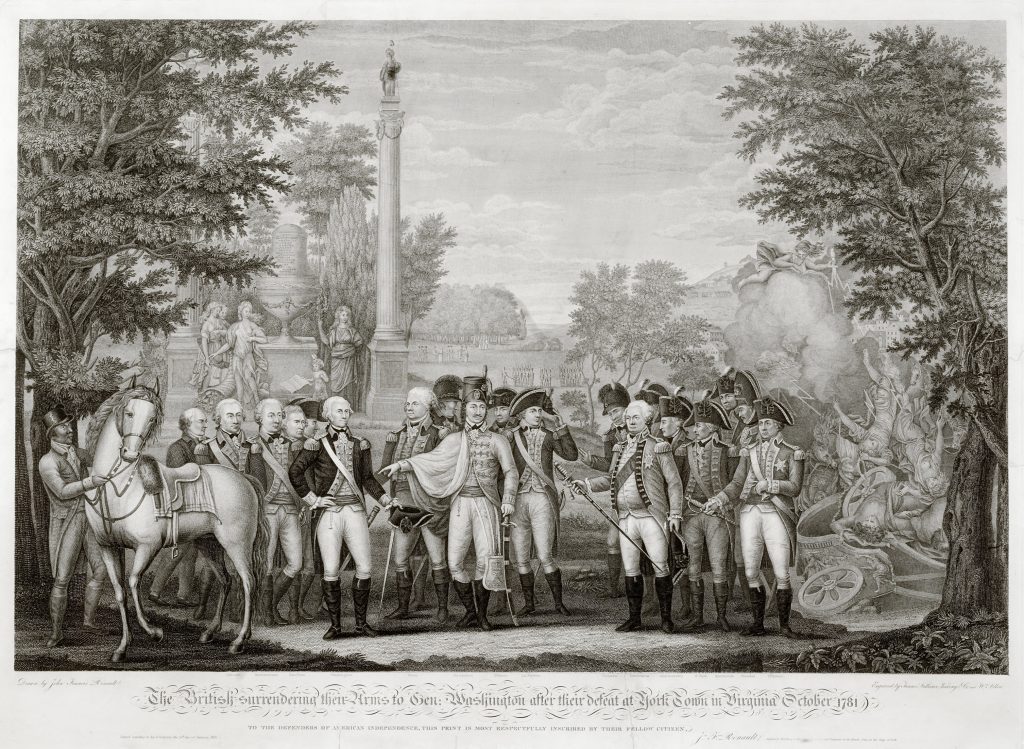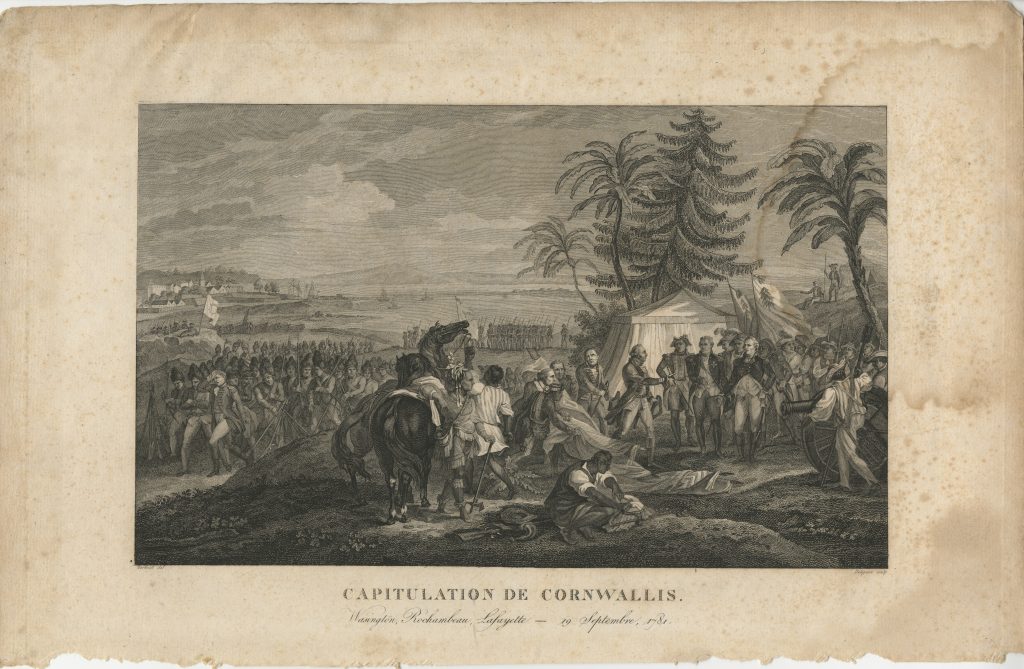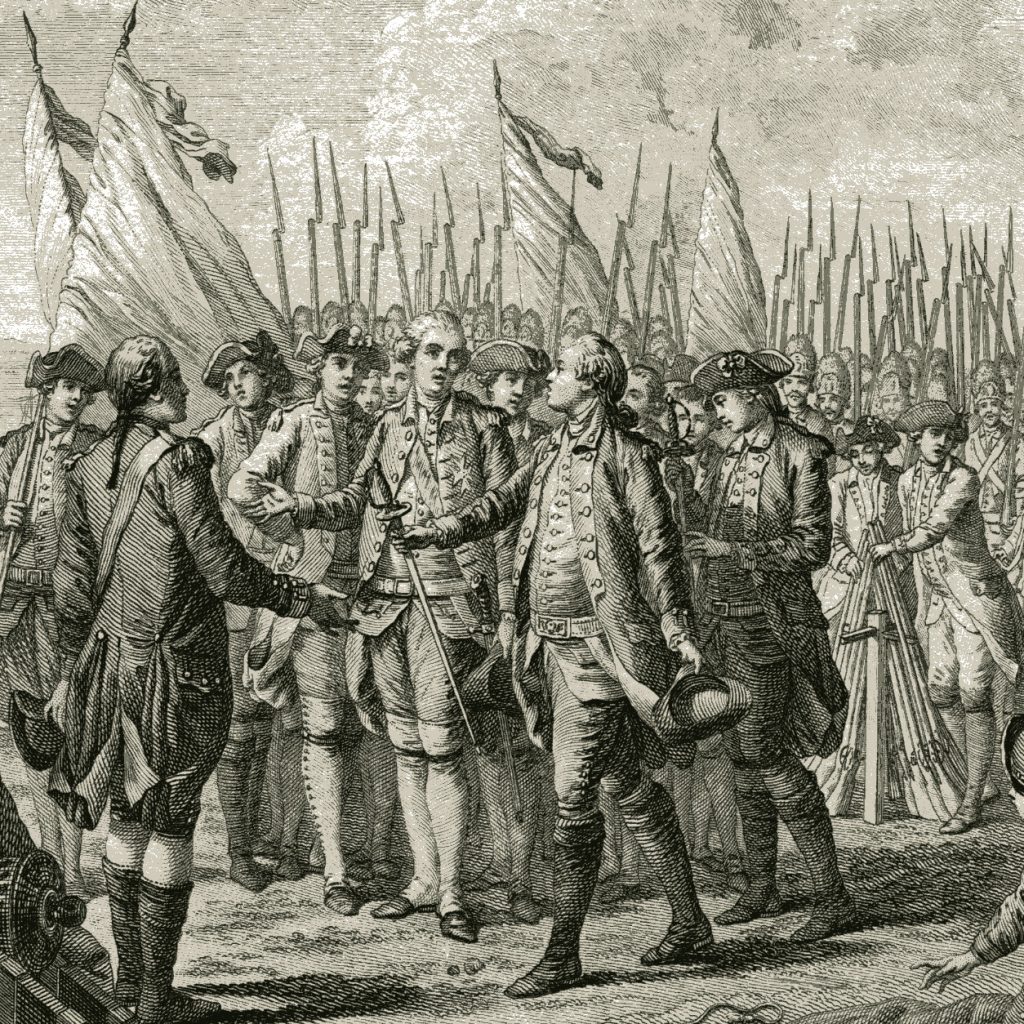Becky Stoltzfus, Kokomo School District, Kokomo, Indiana
DESIGN LEVEL: Middle School-High School
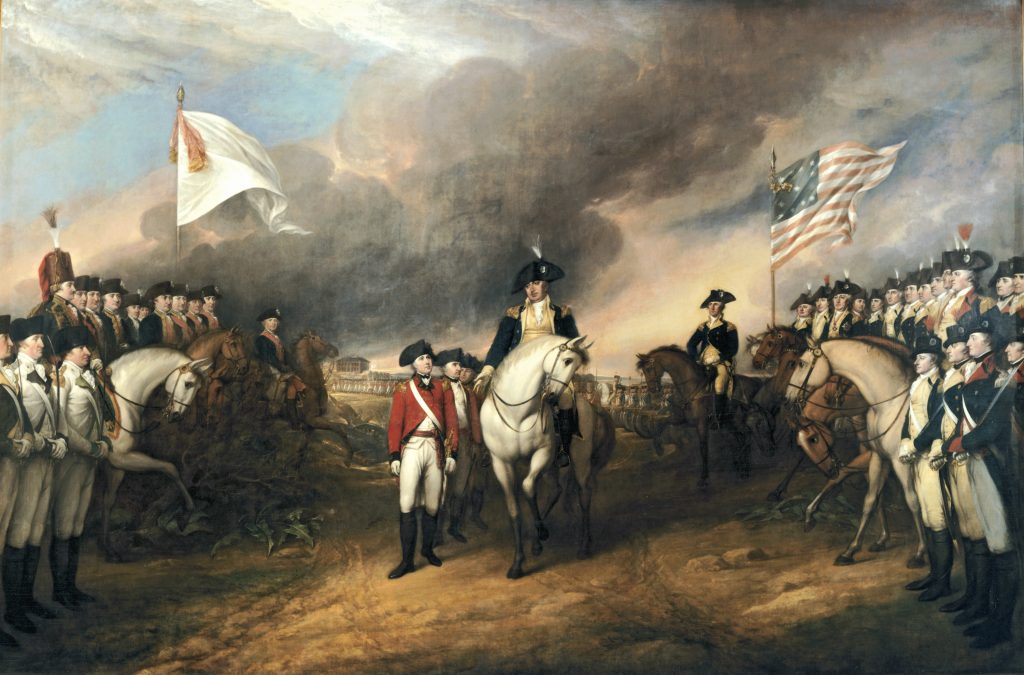
Overview
This lesson could be used in an upper middle school history class toward the end of the study of the Revolutionary War or at the beginning of the year in a high school class as a way to teach document analysis and perspective using familiar content.
The Siege of Yorktown is significant to any study of the Revolutionary War for effecting the surrender of the British at the hands of the combined military forces of France and America.
Objectives
Students will:
- Analyze an event—the Siege of Yorktown—from at least two sources offering differing perspectives.
- Use the OPVL technique to explain how each source’s origin and purpose, and the source content’s value and limitations help to understand an event.
- Write a letter home from the perspective of one of the soldiers or sailors during the Siege of Yorktown or the surrender of Lord Cornwallis. The letter should describe the event using the names of the locations and people involved, and be of an adequate length to demonstrate a proficient understanding of the event.
Materials
- France in the American Revolution, An Exhibition by The Society of the Cincinnati
- YouTube Video:
- PBS; “Liberty! The American Revolution – Teacher’s Guide”
- Warhorse Simulations; “Reviews: Antoine Henri Jomini, Summary of the Art of War, A Condensed Version”
- Teacher-Generated OPVL Worksheet
- National Archives; “Analyze a Map”
- Carte de la partie de la Virginie ou l’armée combinée de France & des États-Unis de l’Amérique a fait prisonnière l’armée anglaise commandée par Lord Cornwallis le 19 octobre, 1781 : avec le plan de l’attaque d’York-town & de Glocester published by Chez Esnauts et Rapilly …, Paris, (ca. 1782). The Robert Charles Lawrence Fergusson Collection.
- To His Excellency Genl. Washington, Commander in Chief of the armies of the United States of America : this plan of the investment of York and Gloucester has been surveyed and laid down drawn by Sebastian Bauman, engraved by Robert Scot, Philad[elphia], (1782). The Robert Charles Lawrence Fergusson Collection.
- Plan of the investment of York & Gloucester by the allied armies : in Sept.r & Oct.r 1781 drawn by Sebastian Bauman, published by Isaac Collins, Trenton, (1785). The Robert Charles Lawrence Fergusson Collection.
- BritishBattles.com; “Siege of Charleston”
- National Archives; “Analyze a Photograph”
- Surrender of Lord Cornwallis by John Trumbull (1820)
- The British surrendering their arms to Gen: Washington after their defeat at Yorktown in Virginia October 1781 drawn by John Francis Renault, engraved by James Stephenson, London & New York, (1856). The Society of the Cincinnati.
- Capitulation de Cornwallis: Washington [sic], Rochambeau, Lafayette, 19 Septembre, 1781 by Francois Nicolas Martinet, Paris, (1819 or 1821). The Robert Charles Lawrence Fergusson Collection.
- Reddition de l’armée du Lord Cornwallis drawn by Jean Jacques Francois, engraved by Francois Godefroy, Paris, (1784). The Society of the Cincinnati.
Recommended Time
Two to three 50-minute class periods.
Day 1 (optional—activating prior knowledge):
Students need to be familiar with the Revolutionary War up to the point of the confrontation at Yorktown and need to understand the effect America’s French alliance had on the outcome of the American Revolution. Students should also be acquainted with Antoine Henri Jomini’s principles of war.
To help your students with these topics the following resources are recommended: the France in the American Revolution exhibition guide from the Society of the Cincinnati, the YouTube video PBS Liberty! The American Revolution – Episode 5, The World Turned Upside Down and the accompanying teacher’s guide, and an article on the Jomini fighting style from the Warhorse Simulations website entitled Summary of the Art of War, A Condensed Version.
Day 2:
Post one or more of these questions as an opening: Are accurate maps always useful? Does perspective matter in a map? Why does the information available in a map matter?
Divide the class into groups of two to four students. Make sure that each group has access to the three maps of Yorktown—Carte de la partie de la Virginie…, To His Excellency Genl. Washington…, and Plan of the investment of York & Gloucester …,—either print copies or, ideally, digital copies on a computer so that students can enlarge areas of the maps to really examine the finer details.
Have students conduct an OPVL study of the maps showing the American and French perspectives of the siege at Yorktown using the OPVL Worksheet. The Analyze a Map worksheet created by the National Archives is also valuable in the analysis of maps as sources.
While the students are working, wander the room, but allow the students to discover all the hidden gems in the map—the ships on fire, General Washington’s and Henry Knox’s tents, the tiny battlefield on the French map and the small sea on the American map. If you have gone over Jomini strategy, they might notice that the French troops are all on one side and the Americans are all on the other. Add scaffolding or guiding questions as needed.
After evaluating the documents, post the following as exit questions or follow up discussion questions: Explain how you know which maps are American and which are French—articulate at least two features that confirm your rationale. What determines the usefulness of a map?
Day 3:
Ask students to write a brief reflection on what they remember about General Benjamin Lincoln at the Siege of Charleston. (He fought valiantly and only surrendered after he had used all or close to all of his supplies and his walls were breached. This meant that he should have been allowed to surrender with honor, however he was not afforded this opportunity because General Henry Clinton felt that no American fighting deserved honor. For a brief description of the siege visit BritishBattles.com’s “Siege of Charleston.”)
Ask the students to share their reflections with the class. If this content is not raised, be sure to ask, “Was Benjamin Lincoln allowed to surrender with honor after the siege?”
Divide the class into groups of two to four students (perhaps differently than the last time to add to the discussion and check for understanding) and have students analyze the three engravings of the British surrender at Yorktown—The British surrendering their arms…, Capitulation de Cornwallis:.., and Reddition de l’armée du Lord Cornwallis—as well as Surrender of Lord Cornwallis by John Trumbull, again using the OPVL technique and worksheet. The Analyze a Photograph worksheet by the National Archives is easily adaptable for use with portraits and engravings, and may be used to complement the OPVL analysis. Ask students to think about the importance of honor during the Revolutionary War as well as the role of General Lincoln at the Yorktown surrender, and reflect upon the following questions: Why was it important that a particular person was depicted in the forefront of the images? What was the importance of presenting the sword to the correct person? How else is honor displayed in the images?
As a final evaluation, Have the students write a letter home from the perspective of one of the soldiers or sailors during the Siege of Yorktown or during the surrender of Lord Cornwallis. Describe the event using the names of the locations and people involved. Letters should have enough content to demonstrate the student understands the event adequately. Use any rubric that you have for the evaluation of written projects.
Standards Addressed
COMMON CORE: Key Ideas and Details; Integration of Knowledge and Ideas
INDIANA STATE: United States History
